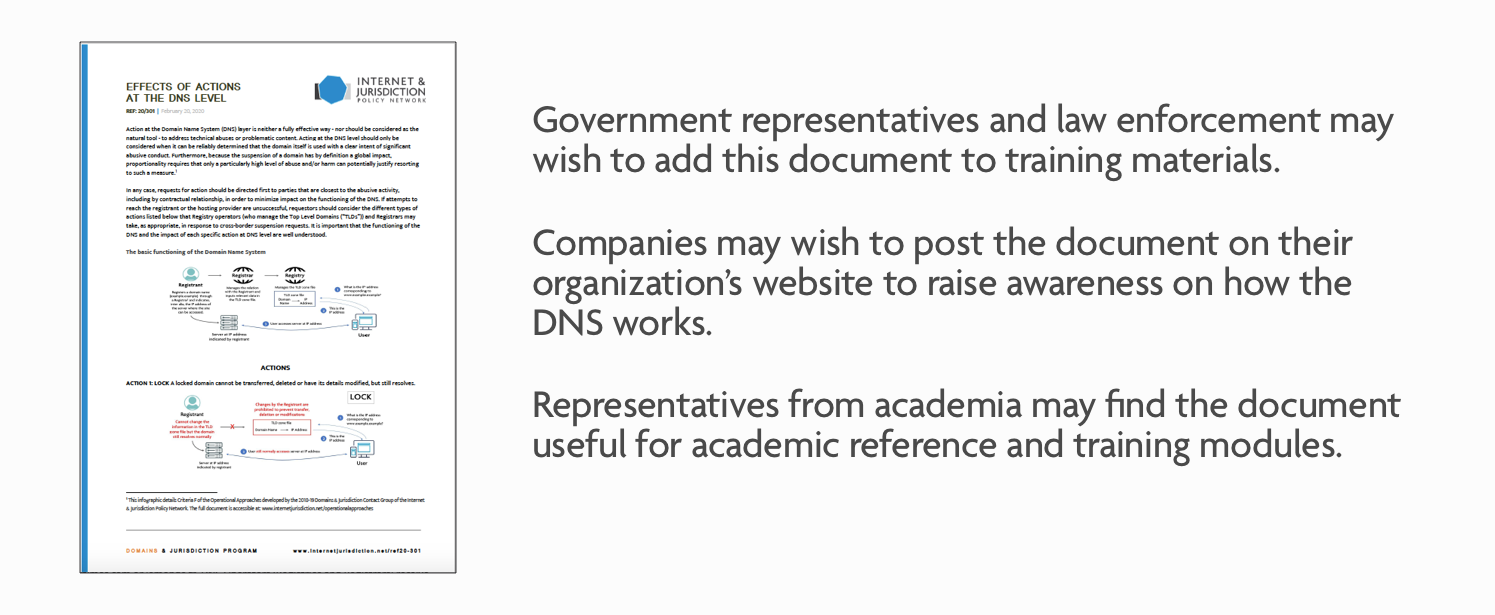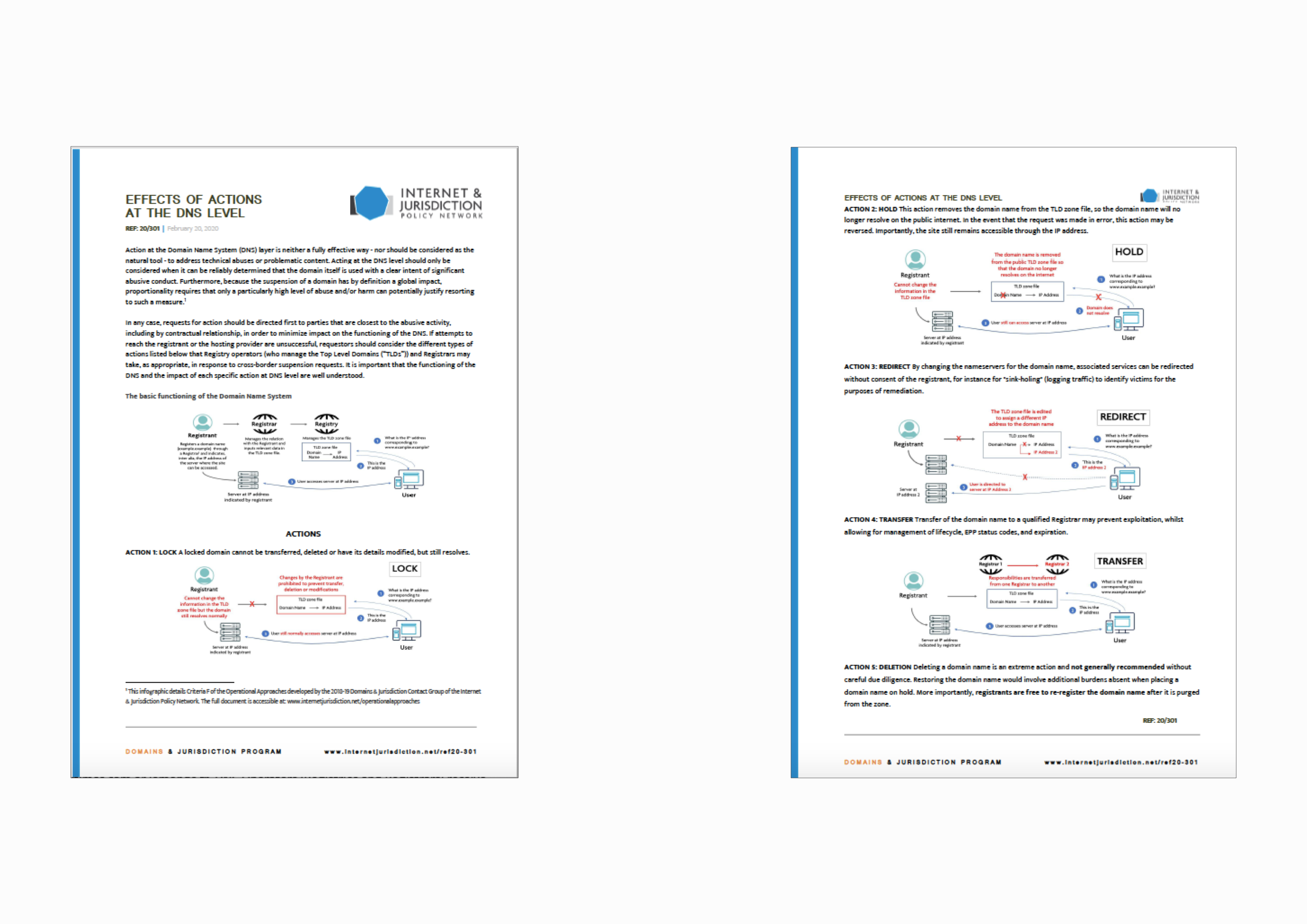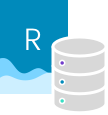Download the new I&J Educational Resource on Effects of Actions at the DNS Level.
DNS operators receive requests to take action at the Domain Name System (DNS) level from a variety of sources for reasons around technical or content related abuses. To guide government representatives, law enforcement, and other actors, in their response to requests to tackle online abuses, the Internet & Jurisdiction Policy Network has released an educational resource (I&J Ref: 20-101) with an infographic, to help build an understanding of how the DNS works in practice and describe in particular the effects of the limited repertoire of actions that can be undertaken at the DNS level.
The suspension of a domain has by definition a global impact, so it is important that the functioning of the DNS and the impact of each specific action at DNS level are well understood.
The DNS, as the “phonebook of the internet”, saves internet users the burden of memorizing Internet Protocol (IP) addresses. Thanks to the DNS, information can be accessed online through domain names, for example nytimes.com or lemonde.fr. DNS Operators (Registries and Registrars) receive orders and requests from a variety of sources, including law enforcement, rights holders and other entities, to take action to remediate abuse.
Such orders and requests are increasing and often arise without full knowledge of the impact of such action on the general functioning of the internet. This can lead to geographically and substantively disproportionate outcomes. For example, what constitutes illegal or harmful speech in one country could be protected speech elsewhere. Moreover, even where the alleged abuse is of a technical nature, such as phishing, the possibility that the subject domain name and/or the associated site has been compromised (hacked, hijacked etc.) should be considered before action is taken.
The I&J Educational Resource (I&J Ref: 20-101) builds on the outcome of the work of Members of the Internet & Jurisdiction Policy Network’s Domains & Jurisdiction Program Contact Group, where over 30 senior-level Members from governments, internet companies, technical operators, civil society, leading universities and international organizations from around the world work together to develop voluntary policy standards (see list of Members below). In 2019, the Members developed a set of Operational Approaches that provide stakeholders with common Norms, Criteria and Mechanisms regarding cross-border DNS-level action to address abuses.
The infographic elaborates on Criteria F of the Domains & Jurisdiction Program Operational Approaches document, and what happens when a particular action is taken at the DNS level and what that does to the infringing domain name.
This Educational Resource translates a complex ecosystem into common language and digestible graphics for governments, law enforcement, and other actors who are tasked with addressing online abuses but may be less familiar with the internet’s technical layers and the basic technical actions available to DNS Operators.
Elizabeth Behsudi, Director, Domains & Jurisdiction Program
The Internet & Jurisdiction Policy Network is the multistakeholder organization addressing the tension between the cross-border Internet and national jurisdictions. It engages over 300 entities from governments, the world’s largest internet companies, technical operators, civil society groups, academia and international organizations from over 50 countries.





